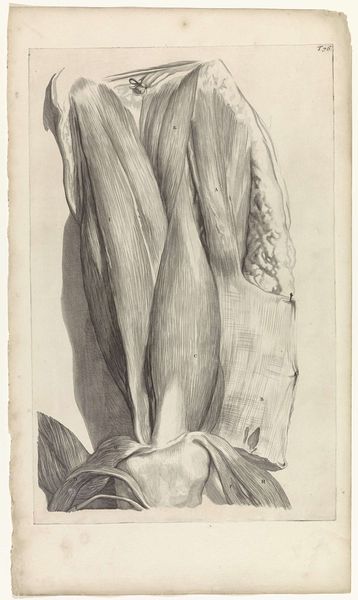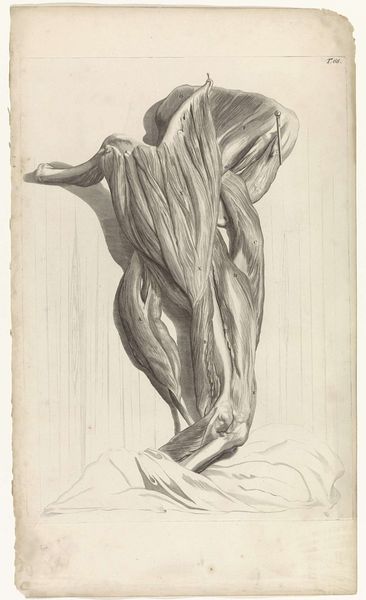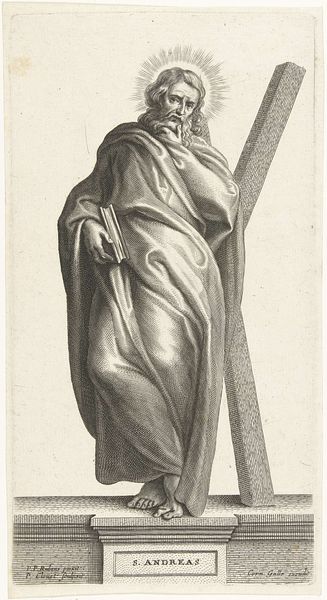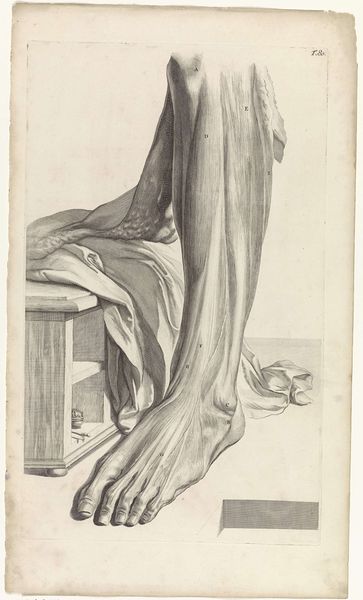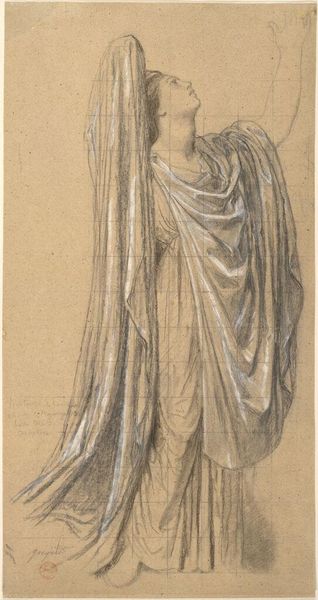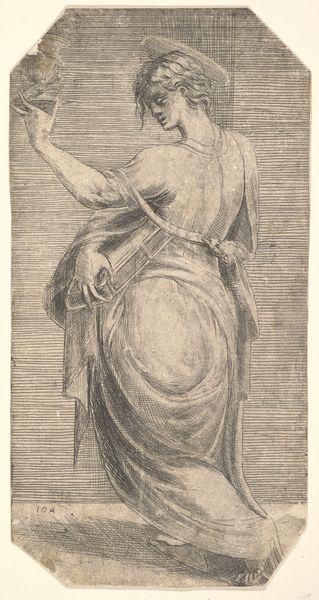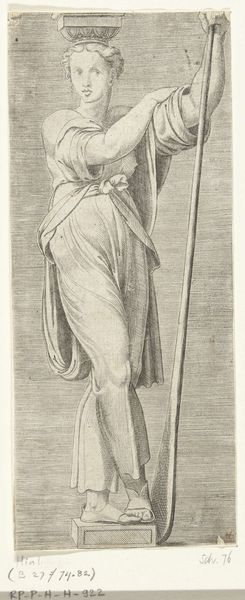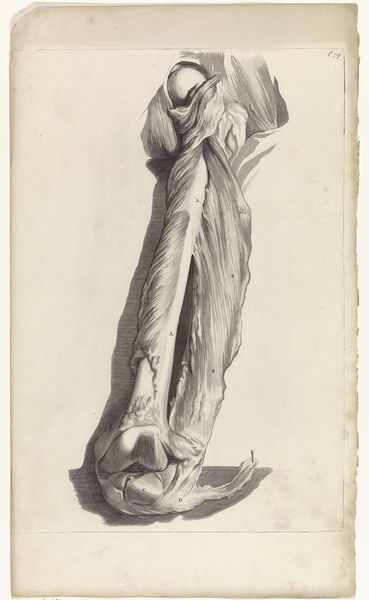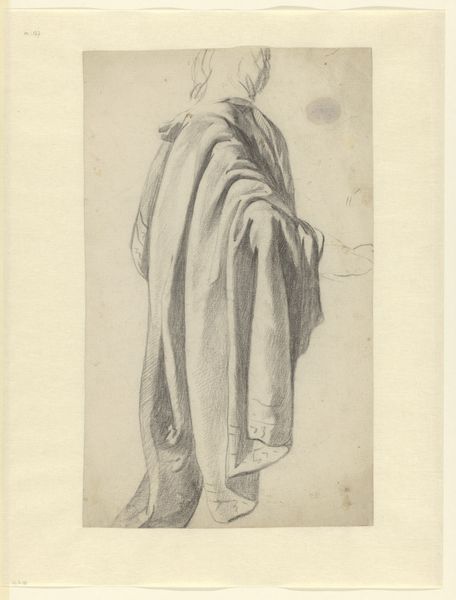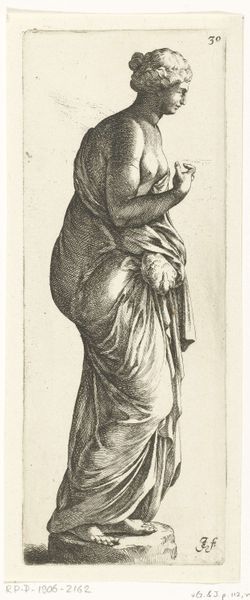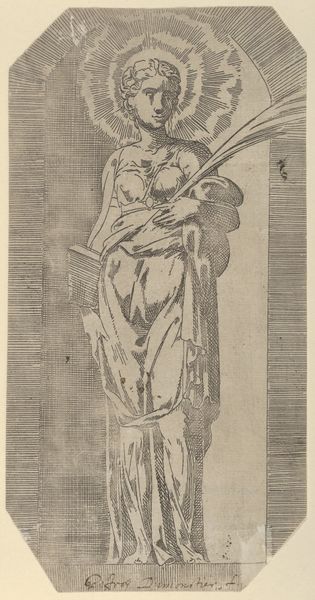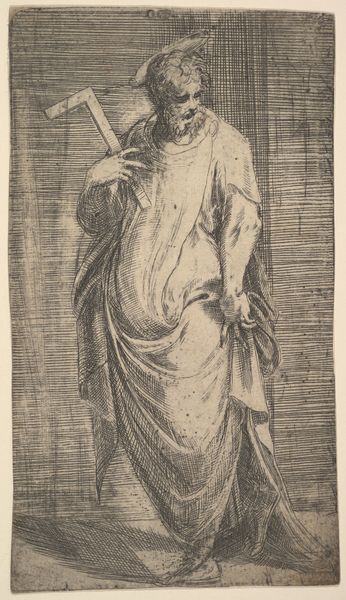
drawing, paper, graphite
#
drawing
#
baroque
#
figuration
#
paper
#
pencil drawing
#
graphite
#
portrait drawing
#
history-painting
#
academic-art
Dimensions: width 333 mm, height 490 mm
Copyright: Rijks Museum: Open Domain
Editor: Here we have Pieter van Gunst's "Third Anatomical Study of the Muscles of the Left Thigh," made around 1685. It's a drawing using graphite and pencil on paper and held at the Rijksmuseum. The level of detail is incredible. What strikes me most is the clinical, almost detached, way of looking at the body. What do you make of it? Curator: It is striking, isn't it? Consider that this level of anatomical drawing coincided with significant shifts in how the body was perceived, moving away from purely religious or philosophical interpretations to more scientific investigations. This image is laden with symbolic meaning – each muscle meticulously rendered, less as flesh and blood and more as components in a rational system. What do you think such detailed anatomical representations gave permission for in the cultural imagination? Editor: I suppose it helped pave the way for a less mystical, more empirical understanding of life... more rational maybe. Curator: Precisely. Think about the historical context: the rise of scientific societies, the Enlightenment brewing. Dissection was becoming more acceptable, although still fraught with social and religious implications. In rendering the body so objectively, even unemotionally as you noticed, the image lays bare a cultural narrative – one of man’s growing ambition to dissect not just bodies, but also the mysteries of existence itself. Are there specific elements that strike you as particularly evocative, viewed in this context? Editor: I think how it lacks personality - like this is a diagram, and how powerful the idea of dissecting things really is. Curator: The pursuit of understanding and control… I think that's key. It's fascinating how this detailed, objective style actually reveals a lot about cultural shifts and intellectual ambitions of that time. I learned to think of medical illustrations as records of their time just now! Editor: Agreed, I'll definitely never see anatomical drawings the same way again! Thanks for your insight!
Comments
No comments
Be the first to comment and join the conversation on the ultimate creative platform.
